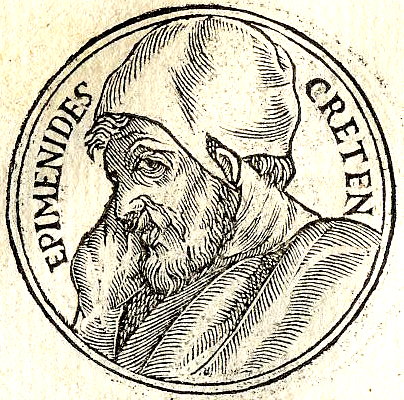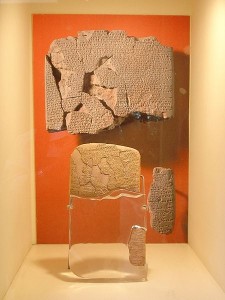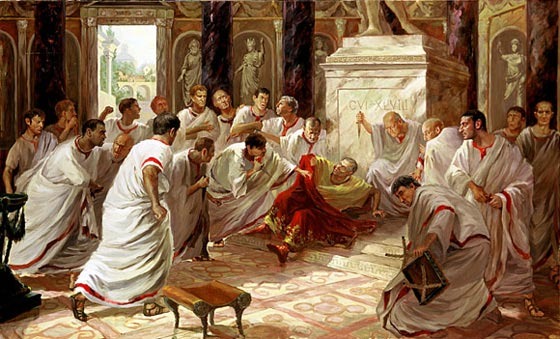by Moe | Apr 13, 2015 | Modern Gnosis
The tattooed skin of Epimenides was preserved at the courts of the ephores in Sparta, allegedly as a good-luck charm. 
One of the founders of the ancient Gnostic mysteries of Orphism, was said to be a Cretan man named Epimenides (Greek: Ἐπιμενίδης), whose tattooed body and skin were held venerable by the ancient Spartans because it was said to reveal “secret things.” Epimenides had lived in the 7th century B.C. and was born in the city of Gnosis, which today is called the city of Knossos (Latin) on the modern-day island of Crete in the Mediterranean Sea.
Epimenides was considered a law giver, prophet, sage, and even a savior to his people on the Holy Island of Crete, and also to his brothers, the Spartans in Athens. Epimenides was a religious man who spent much of his life in his devotions connected with religion. He was a poet who composed several works in verse such as on the origin of the priesthood of Crete known as the Curetes and the Corybantes. He also composed in prose, a treatise on sacrifices. According to some authors, Epimenides died at 157 years of age, and according to others, 299. (more…)
by Moe | Apr 6, 2015 | History of the Brotherhood, Modern Gnosis
There is a secret hidden war being waged all across the world at this very moment for your body,  mind and soul. It is what has been called the eternal battle between light and dark. The war of the Sons of Light, Against the Sons of Darkness.
mind and soul. It is what has been called the eternal battle between light and dark. The war of the Sons of Light, Against the Sons of Darkness.
“And God saw the light, that it was good: and God divided the light from the darkness. And God called the light Day, and the darkness he called Night.” The presence of light makes the day; the absence thereof makes the night. Thus, it is in the history of souls. There are “the sons of light” and “the sons of darkness.”
This is a most marked division of souls by God that created The War of the Sons of Light, Against the Sons of Darkness is also known as “War Rule“, “Rule of War” and the “War Scroll.” It is an ancient Gnostic manual for military organization and strategy that was discovered among the Dead Sea Scrolls. This War Scroll was found among the scrolls along the Jordan River in the Qumran Cave first published by Eleazar Sukenik in 1955.
(more…)
by Moe | Mar 23, 2015 | DNA, History of the Brotherhood
 Many Egyptian scholars and researchers believe that the Hittite and Egyptian Kingdoms have always been separate with each empire ruling their own people in their different lands, but my research proves otherwise. The facts are that the Hittite and Egyptian Kingdoms were a united empire like no other in ancient history that appears to last until this very day. In this series of articles that I would like to call “The Hittite and Egyptian Brotherhood,” I would like to list these facts that I have found below in order to settle this lost and mistaken part of our history.
Many Egyptian scholars and researchers believe that the Hittite and Egyptian Kingdoms have always been separate with each empire ruling their own people in their different lands, but my research proves otherwise. The facts are that the Hittite and Egyptian Kingdoms were a united empire like no other in ancient history that appears to last until this very day. In this series of articles that I would like to call “The Hittite and Egyptian Brotherhood,” I would like to list these facts that I have found below in order to settle this lost and mistaken part of our history.
* The first piece of evidence that I would like to present is the Egyptian–Hittite peace treaty.
This was a peace treaty concluded between Egyptian Pharaoh Ramesses II and Hittite King Hattusili III, in which the Egyptians and Hittites made an “eternal treaty” of “peace and brotherhood for all time.” This King’s wife was a Babylonian Princess named Puduhepa. Ramesses married Hattusili’s daughter, and conferred upon her an Egyptian name, Maathorneferure. Years later he married another Hittite princess. (more…)
by Moe | Mar 19, 2015 | Uncategorized
Many biblical scholars agree that the author of the Book of Revelation was a man named John of Patmos who was said to have written this Revelation while he was imprisoned or exile on the island of Patmos. In the bible, Patmos (Greek, Πάτμος; Italian: Patmo) is a small Greek island in the Aegean Sea.
The biblical descriptive name of Patmos is simply an allegory, and it is not the true original name of the place where Saint John was imprisoned. Current maps and geography place Patmos just off the coast Turkey, but I have found that in ancient times, this island was actually located just off the coast of the Holy Island of Crete in the Mediterranean Sea. Also, its ancient name was simply not Patmos, it had been called by many different names in history such as, Letois, Ophis, Delos, and who the Greek Hellenes had called Kos and the Latins, Coos.
A person from this island of Kos is called a “Koan” in English or in Hebrew a Cohen (Hebrew: כֹּהֵן, kōhēn, “priest”). Hence, the beginning formations of the Judaic priestly family known as the Jewish Cohens which is specific blood line and the Cohen name simply does not designate a person to be DNA related to the original Koans of Kos. Famous sons of Kos would be people such as the father of modern medicine, Hipocrates who founded the Koan school of medicine, which was said to very famous and had continued after his death for a considerable period. It was the birthplace of Apelles, the greatest of Greek painters,
In the year 309BC, Ptolemy I brought Queen Berenike to Kos to give birth to the next king of Ptolemaic Egypt from 283 BCE to 246 BC, Ptolemy II Philadelphus. Ptolemy II was a Koan who had fiercely protected the island of his birth, Kos during his reign which was after the dissolution of the empire of Alexander the Great.
This island of Kos was located just off the coast of modern-day Crete in the Mediterranean Sea that today is called ‘Dia.’
The ancient legend tells Zeus had been hidden from his father Cronus in a cave on Mount Ida by his mother, Rhea. In an attempt to further conceal Zeus, his mother Rhea had placed the infant in the care of the ancient Cretan priesthood there who were called by many names such as the Curetes, Telchines and Corbynites etc.
They were the masters of magic and would use this magic to deceive anyone who attempted to search for Zeus. Part of this magic involved the creation of the Tower of Babble, the confusion of tongues via the creation of various new languages and the manipulation of geographical coordinates such as the true holy land by placing a veil over the entire world until the time of the Apocalypse.
WHAT HAPPENED TO THE ISLAND OF PATMOS (AKA LETOIS, KOS, DELOS OR DIA)?
The reason being is that it was where Jewish Cretans would be banished and imprisoned by Roman emperors who would confine offenders or rebels such as St. John the divine, who in this place of the public prison of the Cretans would write the “Book of Revelation” to the churches of Asia.
Patmos is now simply called Dia and is an uninhabited island with 5 km maximum length and 3 km maximum width. The island had no productive capacity for food, fiber, or timber, with such being imported. Limited water was exploited with an extensive cistern and aqueduct system, wells, and sanitary drains. Various regions operated agoras (markets).
In 1976, Jacques Cousteau carried out underwater exploration around Dia and found the remains of an ancient port in the waters between Heraklion and Dia. This same island I believe to be also once called, Patmos where Saint John was imprisoned and the will be the subject of a future article in itself, but for now, here is a clue via
RESEARCH:
According to the legend the island of Dia, that is known as Patmos in the bible was created by Zeus:
Zeus, while he was dominating the world from his throne in Olympus, he looked to his birthplace, Crete. He was surprised to see his Cretans hunting with bows and spears, wiping out his beloved wild goats (kri kri). The goats were children of Amaltheia the goat that nurtured Zeus with milk while he was hiding from his father Cronus in Diktaion Antron Cave. He got that angry, that he decided to kill all Cretans. Immediately, he blew a lightning into the sea and a huge monster emerged to destroy the Cretans. However, the other gods tried to make him change his mind, but in vain.
Then, Poseidon, the god of Sea, said to Zeus: “My Father and King, how can you devastate Kourites? Is that the way to repay the good that they have made to you?”. Kourites were Cretans that were banging loudly on their shields when Zeus was crying, so as not to be heard by his father Cronus, who would eat Zeus. Zeus immediately changed his mind. Then he took two pieces of rusk and threw them towards Crete. So, when the monster tried to eat them, Zeus with a thunderbolt petrified the dragon with the rusks. This is how Dia and the two islets of Paximadi and Petalidi were born.
by Moe | Mar 8, 2015 | History of the Brotherhood, Illuminati
The Ides of March (Latin: Idus Martii or Idus Martiae) signifies the date of March 15th on which the Pontifex Maximus (Pope) of  Rome, Julius Caesar was assassinated at a meeting of the senate in the year 44 BC. His killers had been composed of approximately 60 Roman Senators who had conspired with the leaders of the murder plot, Cassius and Brutus. Caesar was stabbed a total of 23 times, which ultimately led to his death.
Rome, Julius Caesar was assassinated at a meeting of the senate in the year 44 BC. His killers had been composed of approximately 60 Roman Senators who had conspired with the leaders of the murder plot, Cassius and Brutus. Caesar was stabbed a total of 23 times, which ultimately led to his death.
The murder of Julius had occurred shortly after the Roman Senate had named Caesar dictator perpetuo (“dictator in perpetuity”). Essentially making him the King (Rex) of Rome. Coins called ‘denarius’ were minted in his honor, with his likeness on one side, and with an image of the goddess Ceres and Caesar’s title of Augur Pontifex Maximus on the reverse. He received these honors in the year 44 BC in the Temple of Venus Genetrix, and rather than rising to meet those who were honoring Julius, he defiantly remained seated. (more…)




